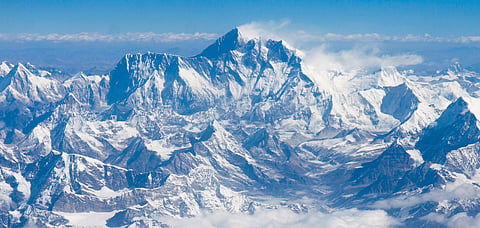

Owing to the consequences of global warming, the plant life is expanding across the snow-capped Himalayan region, including the area around Mount Everest. According to a new research, the mountain systems of the Hindu Kush Himalaya (HKH) are changing rapidly along with the subnival ecosystem. The subnival ecosystem is characterized by short stature plants and seasonal snow that grow between the treeline and the snow line.
The subnival zone, which lies above the treeline and below the permanent snowline, is the most poorly studied vegetation zone in the HKH due to its inaccessibility and high altitude.
According to the data derived from satellite Landsat 5, 7 and 8 missions, there has been significant growth of subnival vegetation from 1993 to 2018.
&ldquoThe findings were validated using online photographs. Subnival ecological changes have likely impacted HKH carbon and water cycles with impacts on millions of people living downstream, but the strength and direction of impacts of vegetation expansion remain unknown,&rdquo reads the study.
The Hindu Kush Himalayan region covers a total area of 4.2 million sq. kilometres, feeding 10 of the largest river systems in Asia, which supply water to 1.4 billion people.
According to the study, HKH warming rates are higher than the global average and it is highly likely that snow-covered areas and snow volumes will decrease across most HKH regions over the coming decades, in response to climatic change.
The study undertaken by Karen Anderson and Dominic Fawcett brought forward the fact that subnival ecological changes have likely impacted HKH carbon and water cycles with impacts on millions of people living downstream. However, the strength and direction of impacts of vegetation expansion remain unknown.
The study also pointed out how the warming rates in the Hindu Kush Himalayan region are higher than the global average. Additionally, the snow-covered areas and snow volumes will decrease across most HKH regions over the coming decades in response to climate change.
